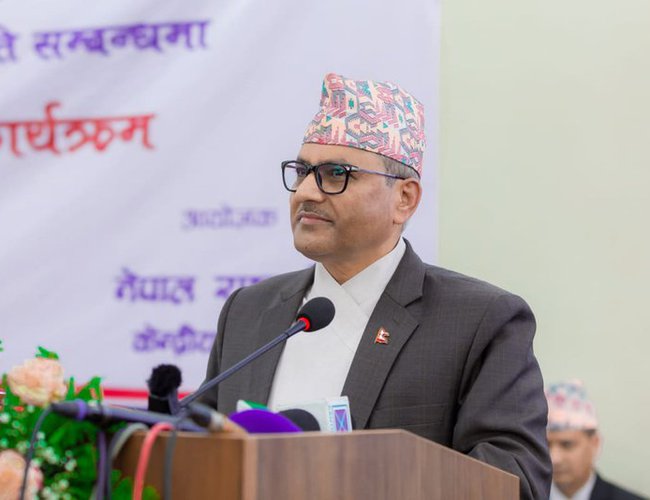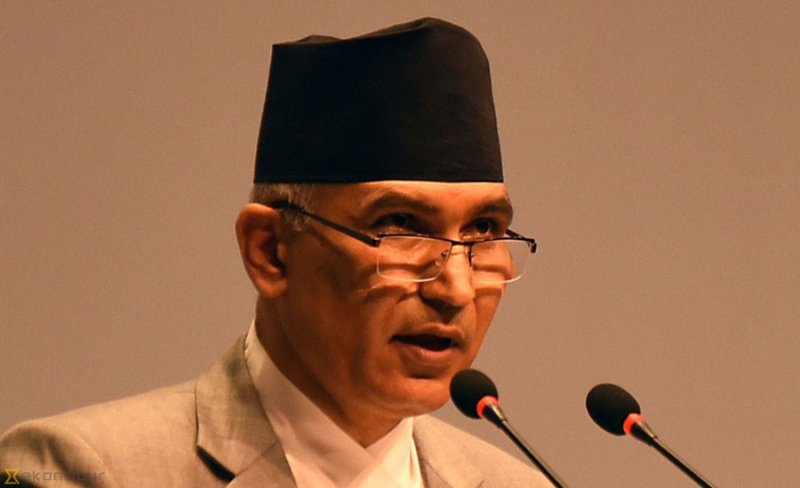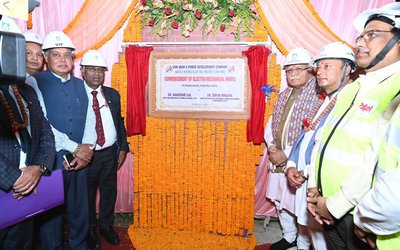
Though it is too early to say that Nepal's economy is recovering, the economic indicator shows that the national economy is recovering from the post-COVID-19 sluggishness.
According to the recently released data of Nepal Rastra Bank, the economy has come out of the prolonged recession that plagued the business and financial sector in the aftermath of the COVID-19 pandemic.
The annual statistics of fiscal year 2023/24 released by Nepal Rastra Bank (NRB) show that foreign exchange reserves, current account, remittances and credit to the private sector witnessed impressive growth while inflation came down significantly.
Gross foreign exchange reserves increased by 32.6 percent to Rs. 2041.10 billion at the end of the last fiscal year, mid-July 2024, from Rs. 1539.36 billion in mid-July 2023.
Out of the total foreign exchange reserves, the reserves held by the NRB increased by 37.4 percent to Rs. 1848.55 billion in mid-July 2024 from Rs. 1345.78 billion in mid-July 2023. Reserves held by banks and financial institutions (BFIs) declined by 0.5 percent to Rs. 192.55 billion in mid-July 2024 from Rs. 193.59 billion in mid-July 2023.
Based on 2023/24 imports, the foreign exchange reserves of the banking sector are sufficient to cover 15.6 months of projected merchandise imports and 13 months of merchandise and services imports, the NRB said in its annual report on the macroeconomic and financial situation of the country.
The ratio of reserves to GDP and reserves to imports stood at 35.8 percent and 108.6 percent, respectively, at the end of 2023/24. A year before, such ratios were 28.8 per cent and 83 per cent.
While the country's export trade remained negligible, remittances supported foreign exchange reserves. Remittance inflows increased by 16.5 percent to Rs. 1445.32 billion in 2023/24 compared to an increase of 23.2 percent in the previous year. The number of Nepali workers, both institutional and individual, who received first-time approval for overseas employment stood at 460,103 and those who received approval for reentry stood at 281,199.
Similarly, consumer price inflation has come down to 3.57 percent in mid-July from 7.44 percent a year ago, while the annual average consumer price inflation was 5.44 percent last year.
"The annual average food and beverage inflation stood at 6.47 percent in FY 2023/24, compared to 6.62 percent a year ago. This inflation declined to 4.10 per cent in mid-July compared to 7.38 per cent a year ago," the central bank said.
The annual average inflation in the non-food and services category stood at 4.64 percent in FY 2023/24 compared to 8.62 percent a year ago.
Current account in surplus
The current account remained in surplus of Rs. 221.34 billion last year against a deficit of Rs. 46.57 billion in FY 2022/23. Last year, capital transfer declined by 22.9 percent to Rs. 5.81 billion and net foreign direct investment (FDI) remained at Rs. 8.40 billion.
A year earlier, capital transfer and net FDI stood at Rs. 7.54 billion and Rs. 6.17 billion respectively.
Similarly, the Balance of Payments (BOP) remained at a surplus of Rs. 502.49 billion in 203/24 compared to a surplus of Rs. 285.82 billion in 2022/23.

Meanwhile, the Nepali currency depreciated by 1.64 percent against the US dollar in mid-July 2024 compared to mid-July 2023. It had depreciated by 2.79 percent in the previous year, NRB informed.
The Government of Nepal mobilized domestic debt of Rs. 234.42 billion and made principal repayment of Rs. 182.62 billion, resulting in net domestic debt mobilization of Rs. 51.80 billion in 2023/24.
Net domestic debt mobilization was 0.9 percent of GDP. The GoN mobilized external loans of Rs. 123.61 billion during the period under review. The outstanding public debt stood at Rs. 2433.24 billion as of mid-July 2024. Of this, Rs. 1252.34 billion were external loans and Rs. 1180.90 billion were domestic loans. The ratio of total outstanding public debt to GDP came down to 42.65 percent last year, which was 42.99 percent in 2022/23.
Deposits, loans go up
Deposits with BFIs increased by Rs. 742.37 billion (13.0 percent) during the year under review compared to an increase of Rs. 627.25 billion (12.3 percent) in the previous year.
The share of demand, savings and time deposits in total deposits was 5.8 percent, 30.3 percent and 56.4 percent respectively in mid-July 2024. A year ago, these shares were 7.7 percent, 26.6 percent, and 58.9 percent, respectively.
Private sector credit from BFIs increased to Rs. 276.94 billion (5.8 percent) last year, compared to an increase of Rs. 175.94 billion (3.8 percent) in FY 2022/23. The share of private sector credit from BFIs to non-financial corporations and households stood at 63.3 percent and 36.7 percent, respectively, in mid-July 2024 compared to 62.7 percent and 37.3 percent, respectively, a year ago.
Similarly, the interest subsidized loan facility has been extended to 120,274 borrowers with the mobilization of Rs. 126.82 billion as on mid-July 2024. Out of this amount, Rs. 86.90 billion was extended to 46,356 borrowers for commercial agriculture and animal husbandry and Rs. 38.29 billion was extended to 71,883 women entrepreneurs.
Base rate moderated
According to NRB, the base rate of BFIs has come down significantly.
The average base rate of commercial banks, development banks and finance companies was 8.00 per cent, 9.71 per cent and 11.21 per cent respectively in the last month of 2023/24. These rates were 10.03 percent, 12.15 percent and 13.41 percent, respectively, in the corresponding month of the previous year.
The weighted average deposit rate of commercial banks, development banks and finance companies was 5.77 percent, 6.63 percent and 7.93 percent respectively in the last month of 2023/24. In 2022/23, these rates were 7.86 percent, 9.14 percent and 9.79 percent, respectively.
Similarly, the weighted average lending rate of commercial banks, development banks and finance companies was 9.93 per cent, 11.34 per cent and 12.55 per cent respectively in the last month of 2023/24. These rates were 12.30 percent, 14.10 percent and 14.82 percent, respectively, in the corresponding month of the previous year.
- TEACHERS ON STRIKE: Students' Future In Jeopardy
- Apr 25, 2025
- NEPAL-THAILAND: Joint Business Council
- Apr 13, 2025
- BIMSTEC SUMMIT: Nepal’s Stand
- Apr 11, 2025
- IME GROUP: Expands Into Paper Industry
- Mar 24, 2025
- CPN UML: Instigated By India
- Mar 23, 2025















